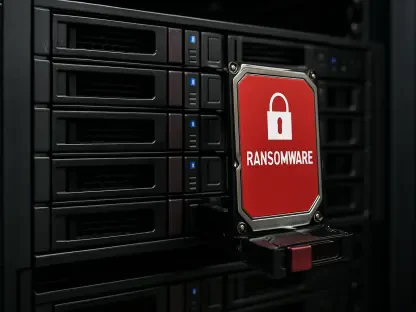The evolution of open-source tools is accelerating at an unprecedented pace, ushering in transformative changes in DevOps, cybersecurity, and cloud management. As we look ahead to 2025, it becomes clear that these tools will be indispensable for organizations aiming to maintain a competitive edge. By leveraging these tools, organizations can enhance their operational efficiency, tighten security measures, and manage cloud resources more effectively, ultimately driving innovation and reducing costs.
Open-source tools stand out due to their flexibility, community-driven development, and ability to foster innovation. These tools enable organizations to swiftly adapt to changes and incorporate new features and security enhancements delivered by global communities. In the fast-paced world of technology, open-source solutions allow companies to remain agile and responsive, creating software that meets ever-evolving standards while fostering collaboration and knowledge sharing. This communal effort results in robust, secure, and practical tools that continue to drive progress in DevOps, security, and cloud management.
The Future of DevOps Tools
Jenkins has solidified its role as a cornerstone of Continuous Integration and Continuous Deployment (CI/CD) practices and will remain vital in 2025. Its capability to streamline repetitive tasks, seamlessly integrate with third-party tools, and scale horizontally ensures that software development pipelines are efficient and reliable. By automating mundane processes, Jenkins frees up developers to focus on innovation and enhancement, reducing human error and expediting production cycles. Its flexibility in integrating various plugins and tools makes it compatible with diverse environments, further enhancing its utility in DevOps operations.
GitLab’s comprehensive DevOps platform, offering an integrated workflow from source code management (SCM) to CI/CD and monitoring, will gain further traction. By simplifying management and including built-in security testing, GitLab enables teams to streamline their development processes, ensuring continuous delivery without compromising security. Enhanced collaboration features foster teamwork across development and operations, making it easier to handle complex tasks and effectively manage projects. The ability to integrate static and dynamic security testing into pipelines highlights GitLab’s suitability for organizations prioritizing secure and efficient development environments.
Docker and Kubernetes will continue to lead in containerization and orchestration. Docker’s ability to isolate applications and their dependencies ensures consistency across different environments, facilitating faster deployment and reducing the “works on my machine” syndrome. Kubernetes automates the deployment, scaling, and management of containerized applications, supporting microservices architectures and enhancing resource allocation and service resilience. These technologies enable developers to deploy and scale applications with unprecedented ease and reliability. The synergy between Docker and Kubernetes will empower developers to manage complex infrastructures while ensuring application stability and performance.
Infrastructure as Code (IaC) tools like Terraform will revolutionize how infrastructure is managed. By expressing infrastructure in code, Terraform reduces human errors, enhances repeatability, and supports multi-cloud environments, making it an essential tool for modern enterprises. The ability to manage infrastructure across multiple cloud providers simplifies operations and ensures consistency. Terraform’s declarative configuration method, whereby resources are automatically adjusted to match desired states, brings efficiency and reliability to infrastructure management, crucial elements for maintaining a scalable and robust cloud environment.
Ansible will simplify automation for configuration and deployment with its agentless architecture and user-friendly YAML configuration files. These features make managing complex infrastructure tasks more straightforward and efficient. Ansible’s simplicity and ability to orchestrate server setups, software installations, and updates without needing additional software on client machines reduce overhead and dependency issues. This ease of use and broad functionality makes Ansible an attractive option for organizations looking to streamline operations and improve reliability and consistency in their deployment processes.
Advancements in Cybersecurity Tools
OWASP ZAP will be crucial in identifying security vulnerabilities in web applications by 2025. With automated and continuous security testing, organizations can ensure their applications remain secure without disrupting functionality. Its ability to perform active and passive scanning allows comprehensive testing without adversely affecting application performance. The strong community support and frequent updates make OWASP ZAP resilient to emerging threats, ensuring robust protection and maintaining application security at the forefront of development processes.
The Metasploit Framework will remain a favorite among security professionals for penetration testing. Its comprehensive exploit database and integration with other security tools help simulate attacks and identify system weaknesses, enabling proactive defense measures. By allowing security experts to perform realistic attack simulations, Metasploit aids in thoroughly understanding potential vulnerabilities and developing efficient mitigation strategies. The framework’s extensive post-exploitation modules further assist in maintaining access, escalating privileges, and gathering network information, providing in-depth insights and comprehensive testing capabilities.
Snort, a powerful network intrusion detection system, will provide real-time monitoring and rapid response to threats. Its customizability and community-driven signatures make it a valuable asset for any organization’s security arsenal. By continuously analyzing network traffic and identifying suspicious activity, Snort enables organizations to respond promptly to potential threats, minimizing damage and maintaining network integrity. Regular updates from the vast community enhance Snort’s capabilities, ensuring it adapts to new security challenges and remains effective in safeguarding networks.
Kali Linux will continue to be the go-to offensive security platform, offering a comprehensive toolset for network scanning, vulnerability assessment, and digital forensics. By incorporating various tools into a single distribution, Kali Linux simplifies complex security tasks, aiding security experts in staying ahead of emerging threats. The ability to run from a live USB without leaving traces makes it ideal for scenarios requiring stealth and non-persistent operations. Active community support and regular updates ensure that Kali Linux remains relevant and effective, providing cutting-edge tools for robust security assessments and forensics.
Innovations in Cloud Management
OpenStack, as an open-source cloud platform, will empower organizations to create and manage public and private clouds efficiently. Its flexibility and vendor-agnostic nature make it a popular choice for customized cloud infrastructure, accommodating specific organizational needs. The comprehensive ecosystem offered by OpenStack manages virtualized resources holistically, ensuring seamless operations across compute, storage, networking, and identity management domains. Continuous updates from the active community help integrate innovative technologies, keeping deployments at the forefront of the cloud management landscape.
Prometheus, paired with Grafana, will enhance monitoring and observability of cloud services. Real-time monitoring and custom dashboards provide critical insights into performance, allowing organizations to maintain optimal cloud operations. Prometheus’s ability to gather performance metrics such as CPU usage, memory, disk space, and network traffic provides a detailed overview of cloud health, while Grafana’s interactive visualization tools facilitate easy interpretation of data. Together, they help identify potential issues proactively, ensuring efficient and reliable cloud operations while maintaining resource allocation and usage.
Kubernetes will revolutionize multi-cloud deployment orchestration with its ability to abstract infrastructure and facilitate scalability. Kubernetes simplifies the deployment of applications across different cloud platforms, eliminating the need for modification and enabling seamless cross-cloud portability. Its response to traffic and resource demands incorporates auto-scaling capabilities, ensuring applications can handle varying loads efficiently. The self-healing characteristic that automatically replaces failed containers strengthens application resilience, reducing downtime and enhancing reliability. Kubernetes also supports microservices architectures, making it ideal for cloud-native applications necessitating frequent updates and scalability.
Terraform will maintain its importance in multi-cloud infrastructure management. Supporting multiple cloud providers and ensuring declarative configuration, Terraform helps manage resources consistently across different clouds. Its inclination toward version control, tracking and enabling the rollback of changes, ensures a stable and reliable infrastructure. Integrating Terraform into cloud management practices simplifies operations, enhances efficiency, and reduces the risk associated with manual configurations. Maintaining consistency across diverse environments using Terraform ensures organizations can navigate complex multi-cloud setups with confidence and precision.
Best Practices for Integration
Automating security and testing will become a cornerstone of DevOps practices by 2025. Integrating tools like OWASP ZAP and Metasploit into CI/CD pipelines helps detect vulnerabilities early, ensuring secure deployments. Early security scans and penetration testing can identify potential issues before production, minimizing risks and enhancing the overall security of applications. This proactive approach to security ensures continuous protection while maintaining development agility, a critical aspect of modern software development processes.
Leveraging Infrastructure as Code will bring consistency to cloud resource setup and configuration. Tools like Terraform and Ansible will reduce human errors, ensuring smoother and more reliable operations. IaC enhances operational efficiency by defining infrastructure programmatically, minimizing manual interventions and conflicts. Automated setup and configuration streamline complex tasks, ensuring consistency and reliability in deployments. This practice is crucial for maintaining scalable and maintainable cloud infrastructures in dynamic environments.
Proactive monitoring will be essential in identifying issues before they escalate. Implementing Prometheus for real-time application monitoring and deploying Grafana for interactive visualization will be critical for maintaining cloud infrastructure health. By continuously observing performance metrics and establishing alerts for anomalies, organizations can respond swiftly to potential problems, preventing downtime and ensuring optimal resource utilization. This proactive measure enhances operational reliability, helping organizations maintain efficient and resilient cloud environments.
Integrating security into DevOps will be key for contemporary organizations. Encouraging collaboration between development, operations, and security teams will embed security practices into CI/CD pipelines, ensuring continuous, secure delivery. By fostering a culture of shared responsibility for security, organizations can enhance their security posture while maintaining agility in development processes. Bringing security considerations early into the development lifecycle ensures robustness in applications and infrastructure, a pivotal element for modern enterprises aiming to deliver secure and reliable services.









